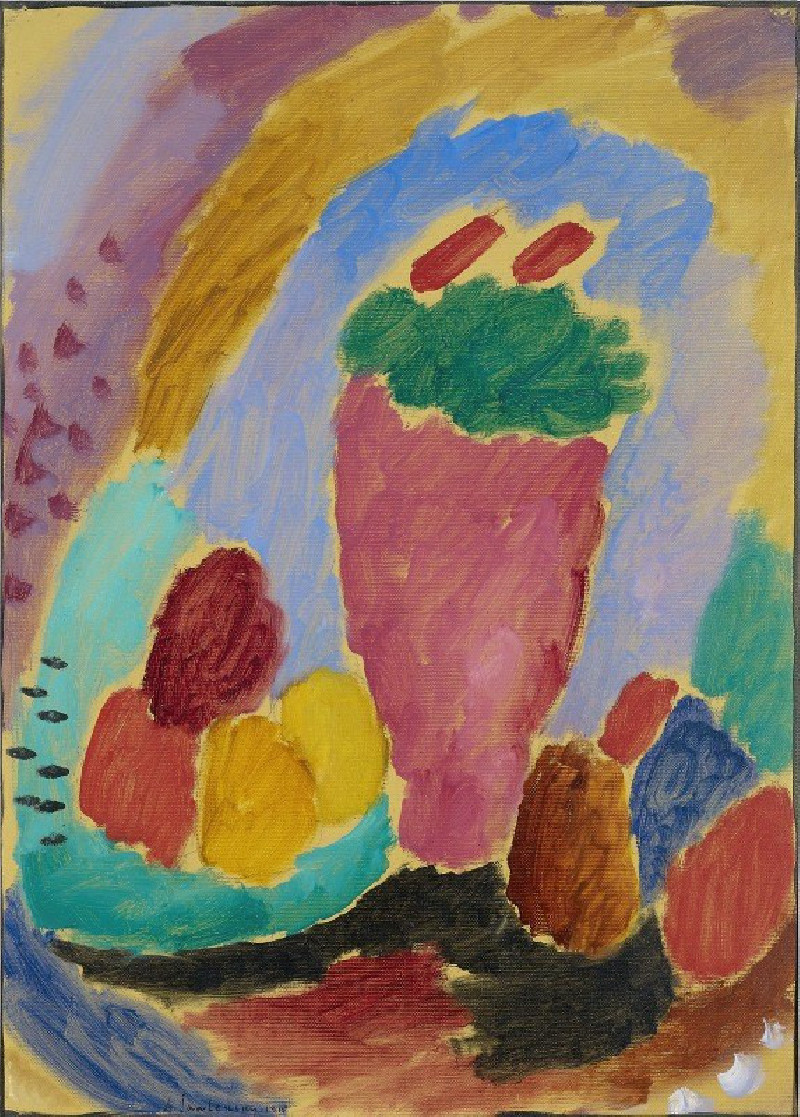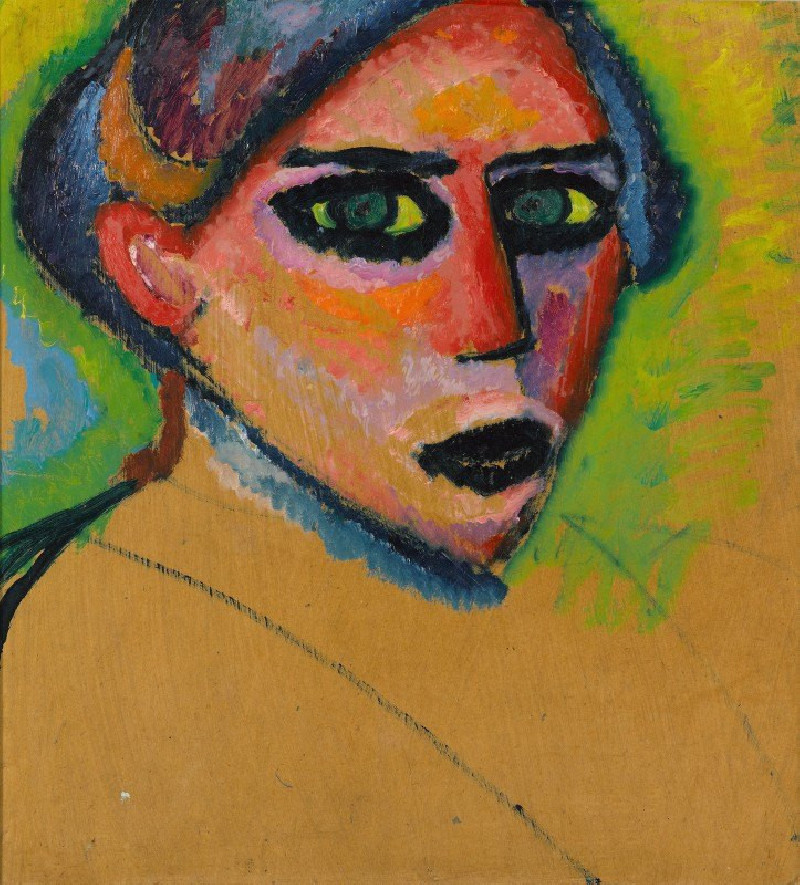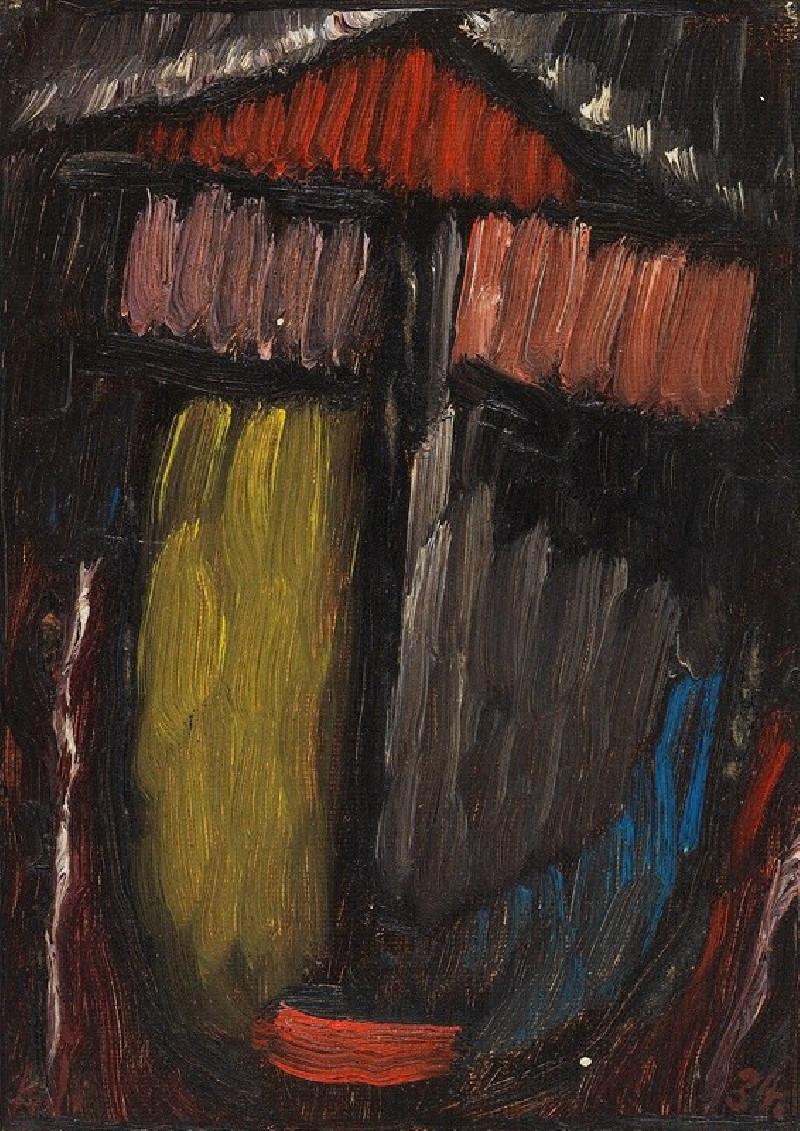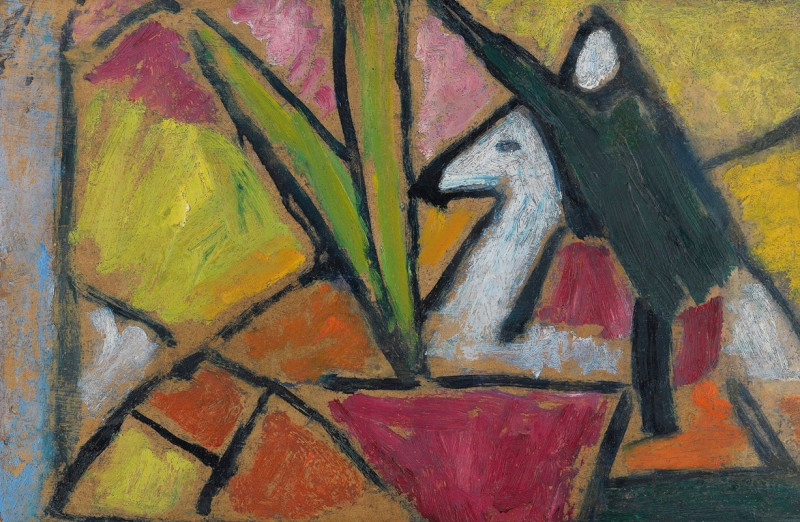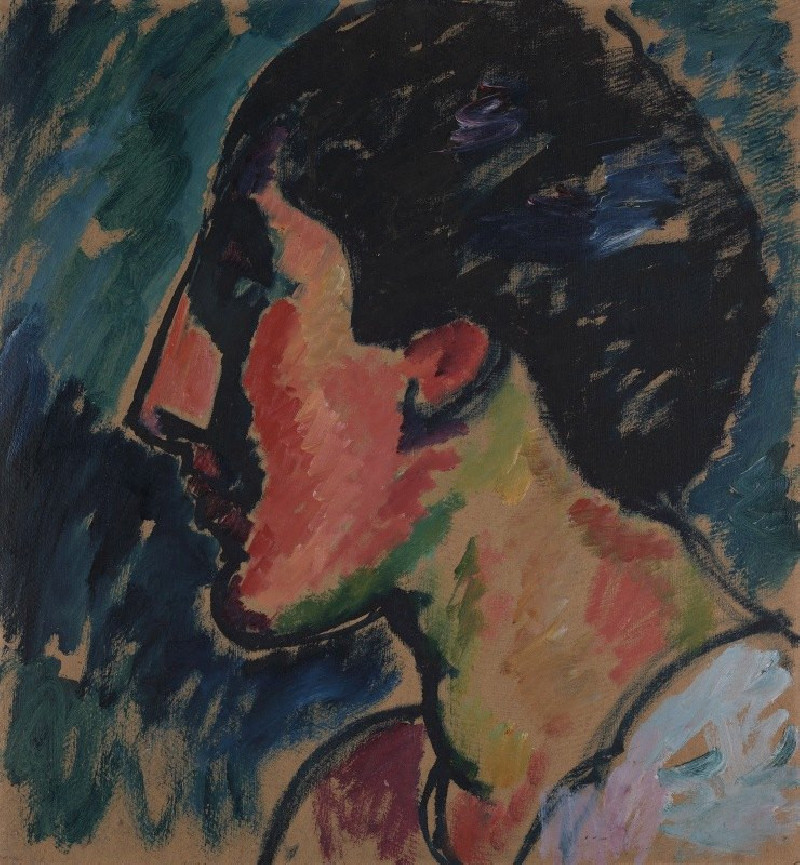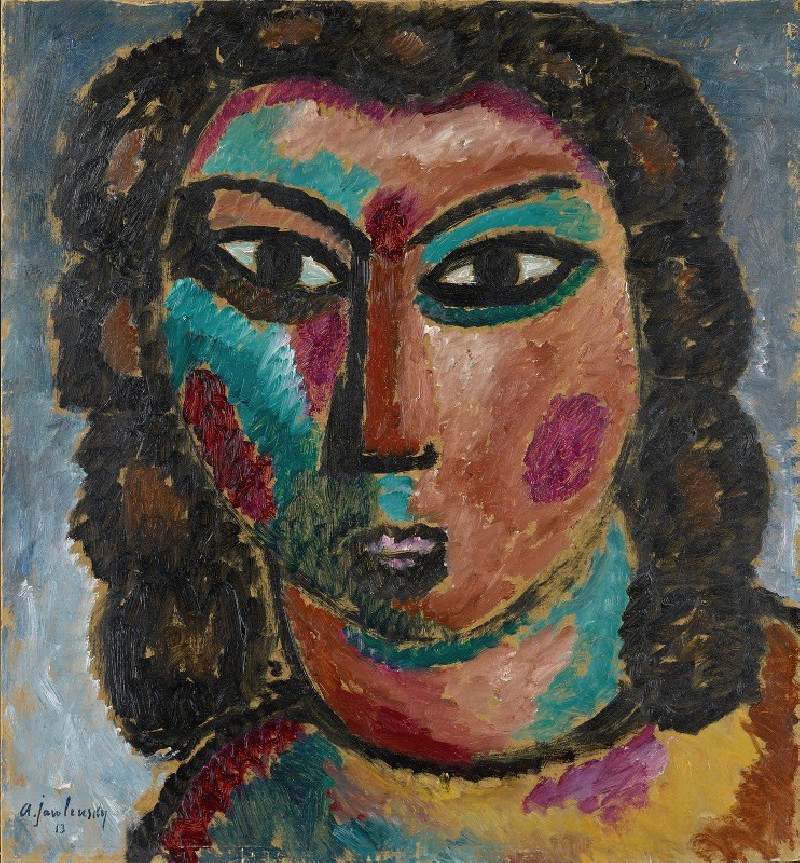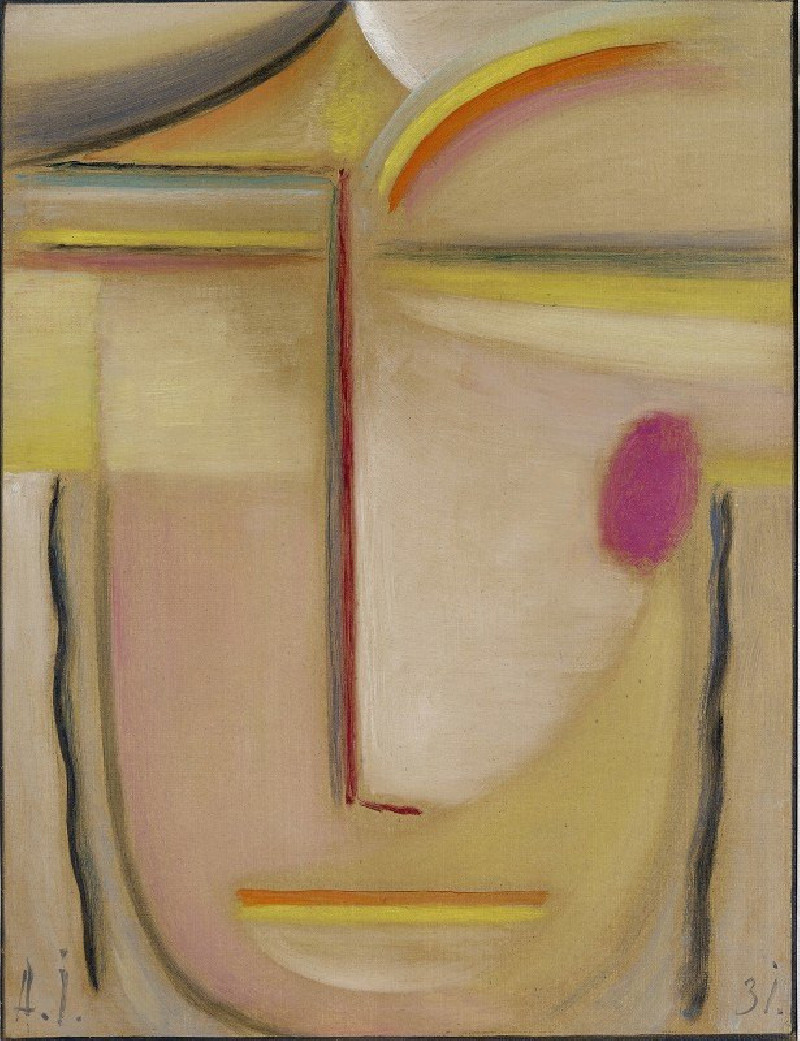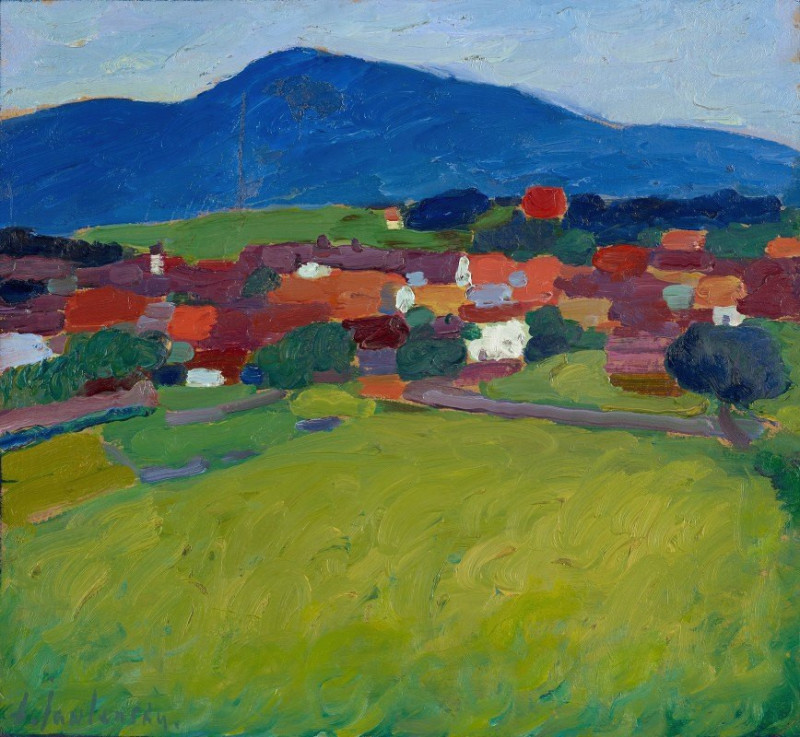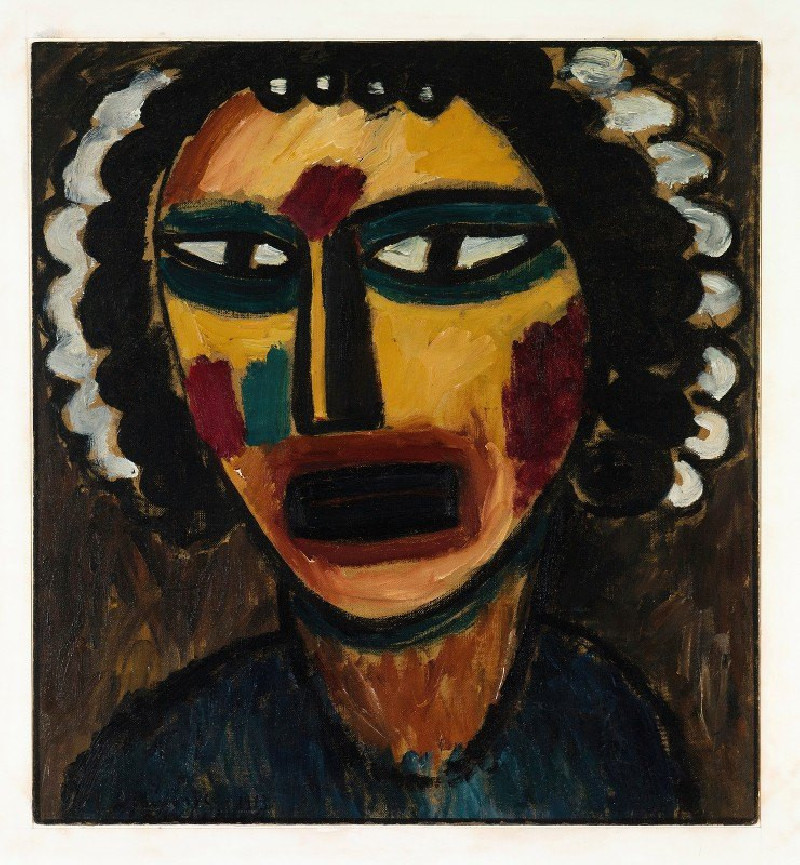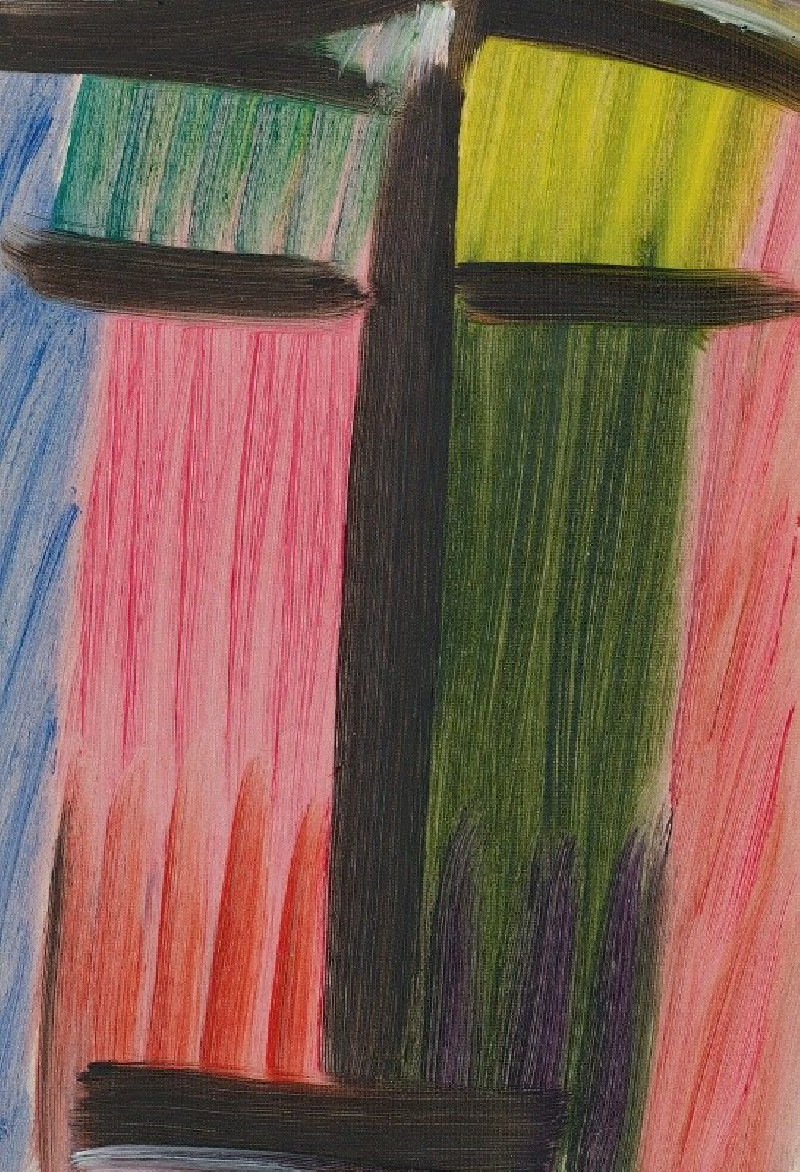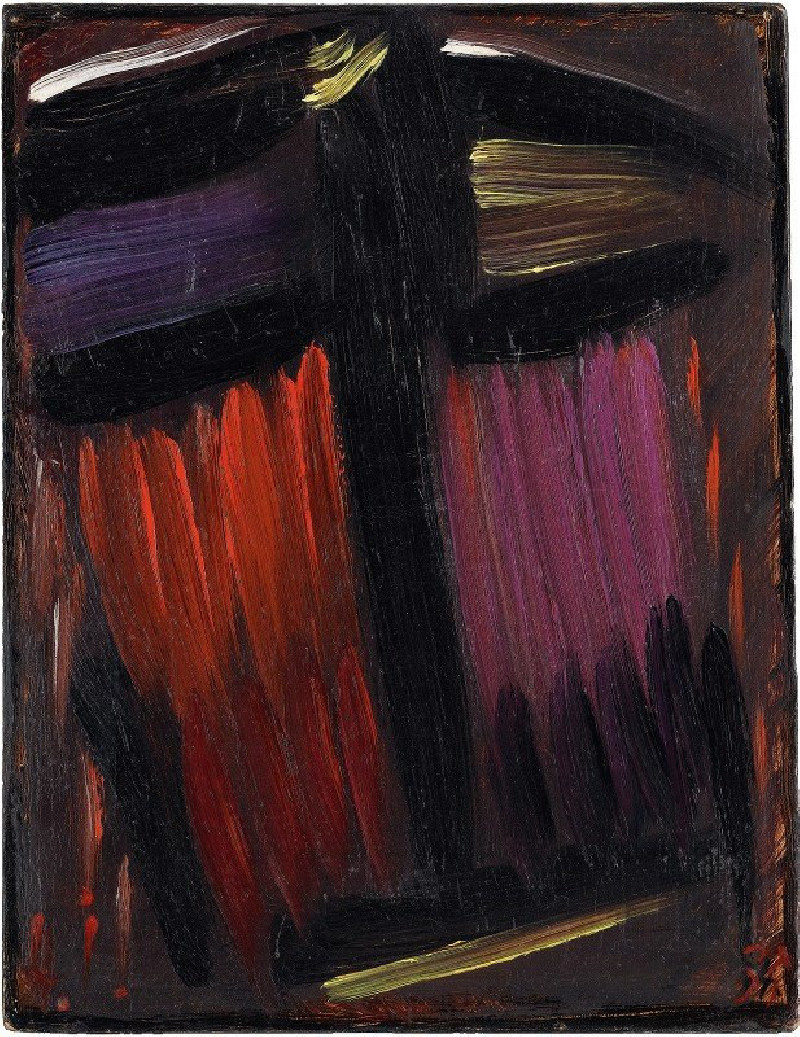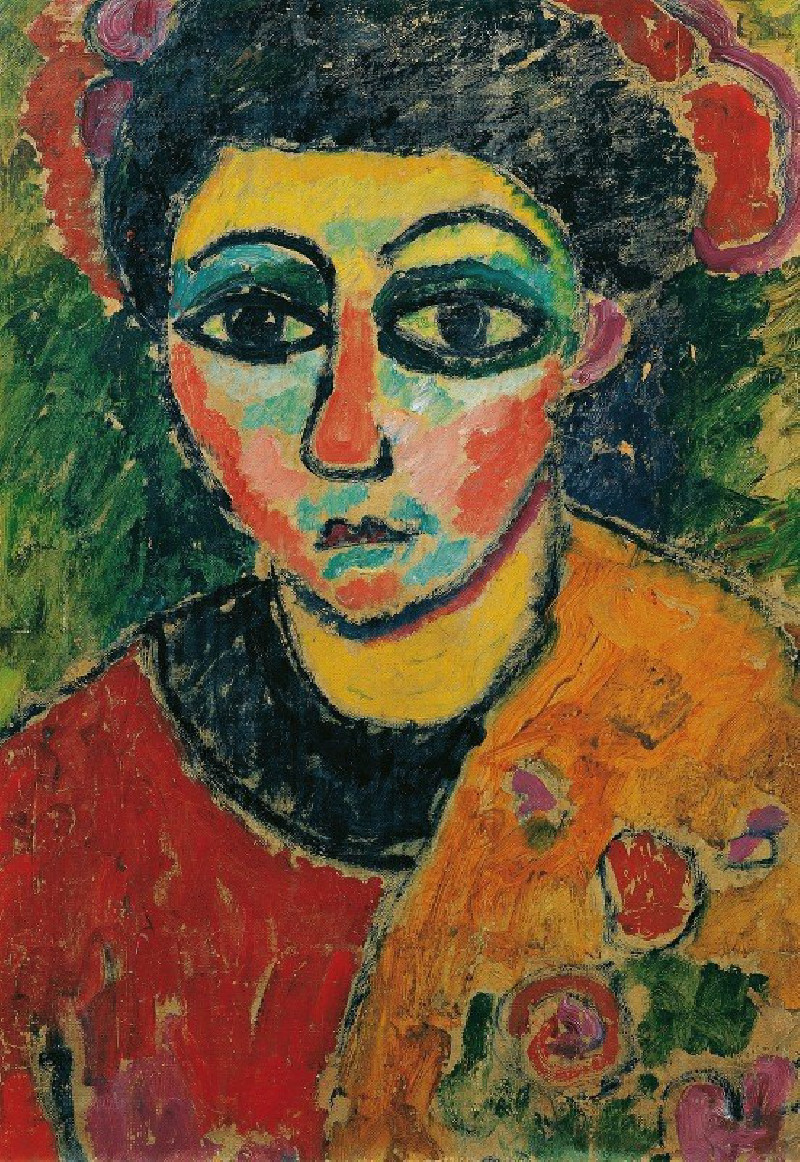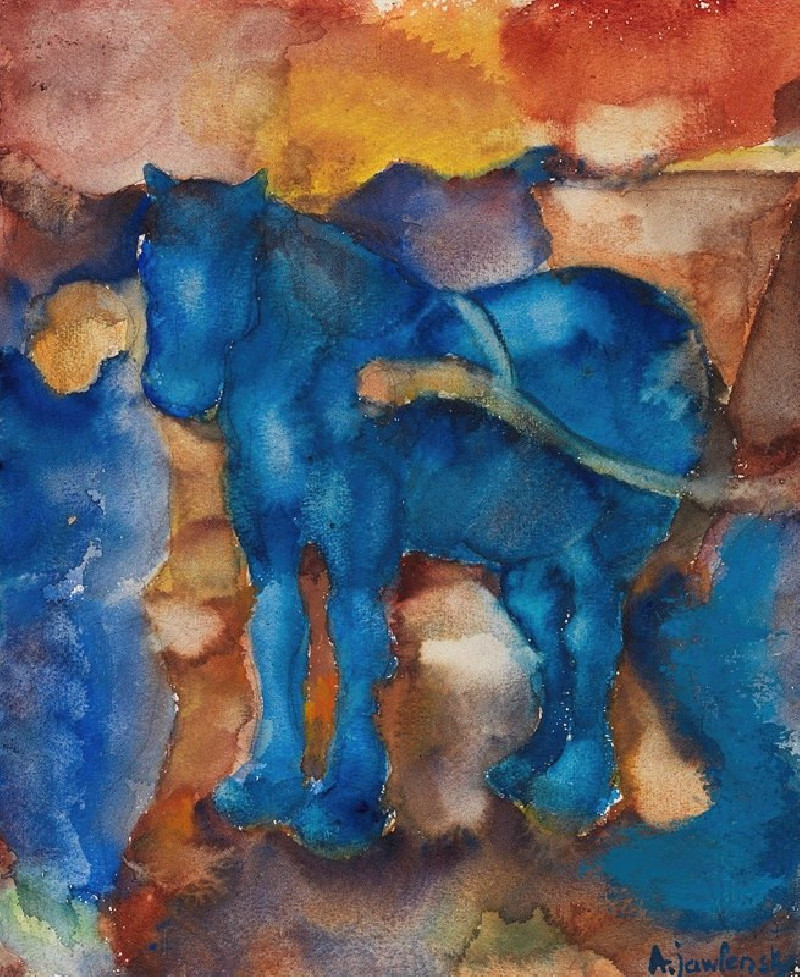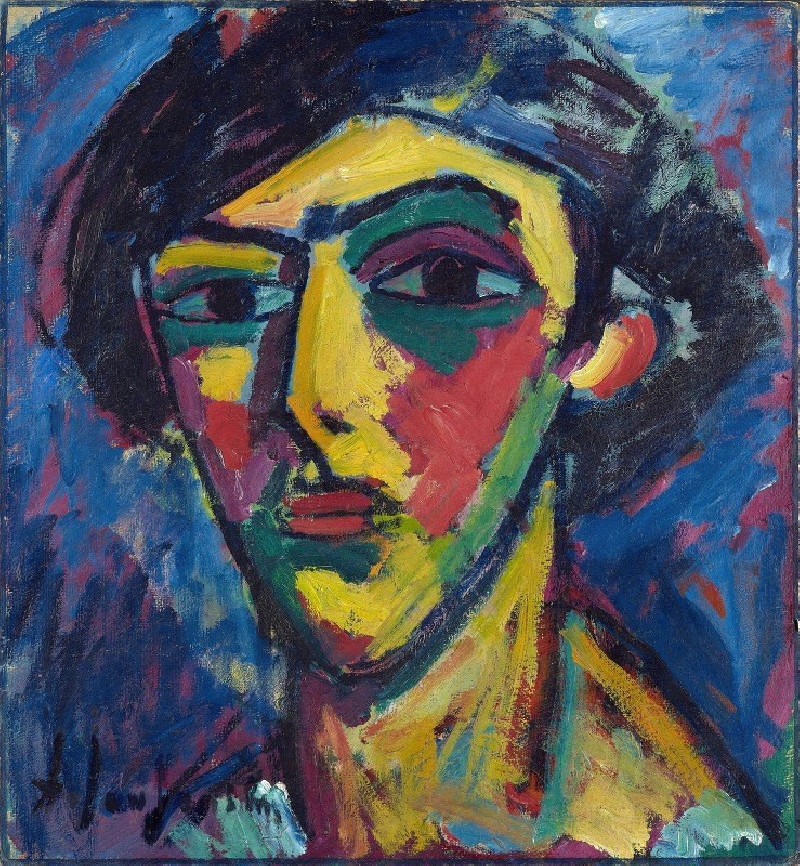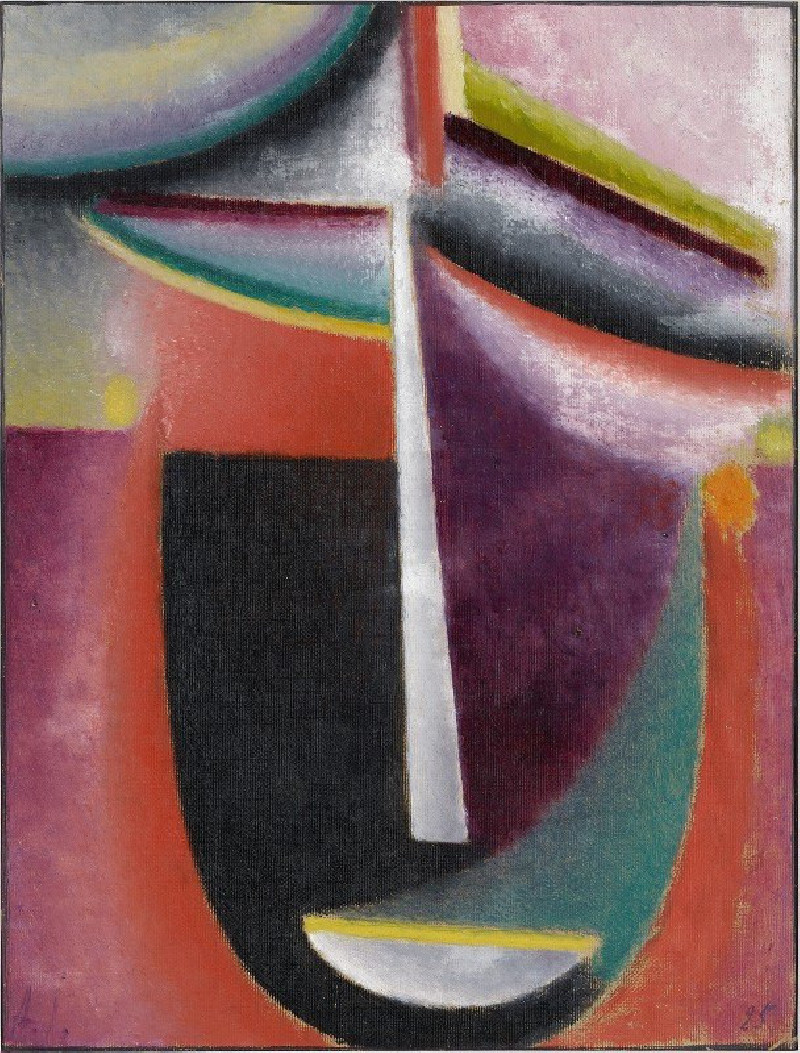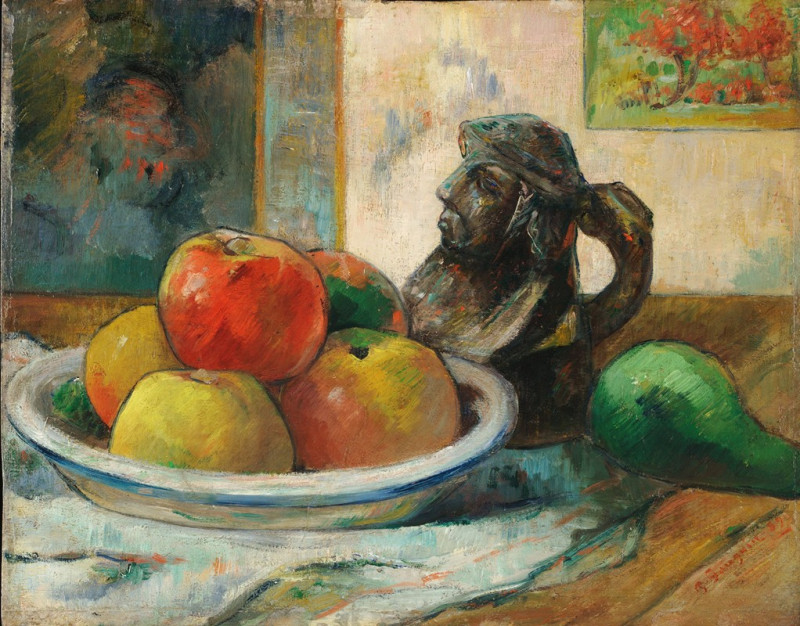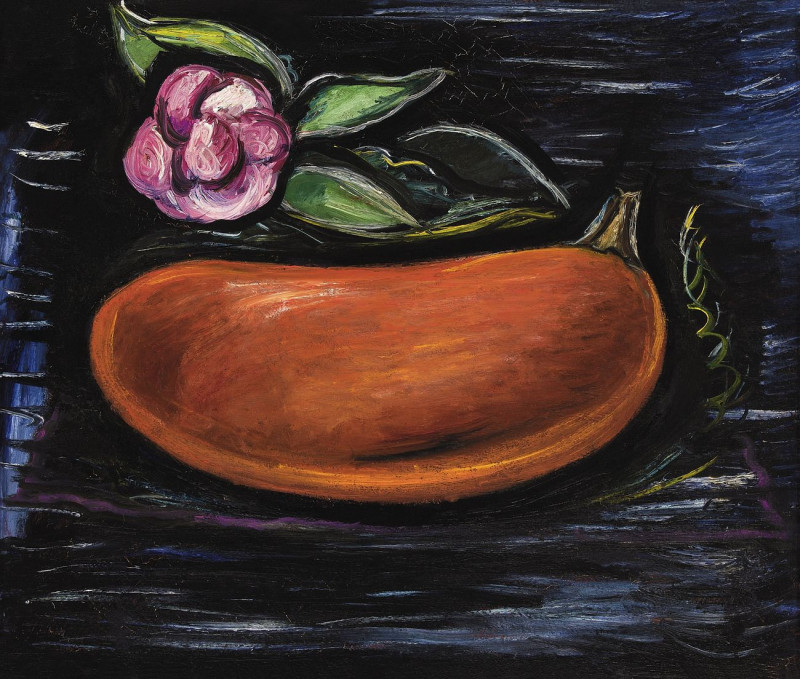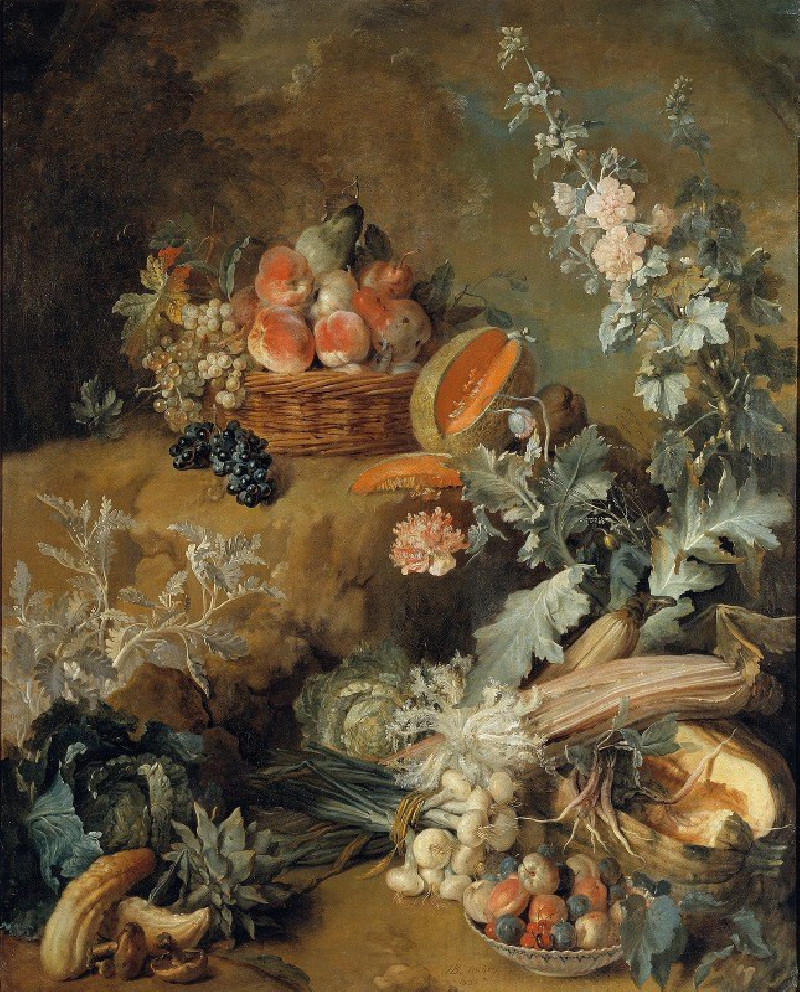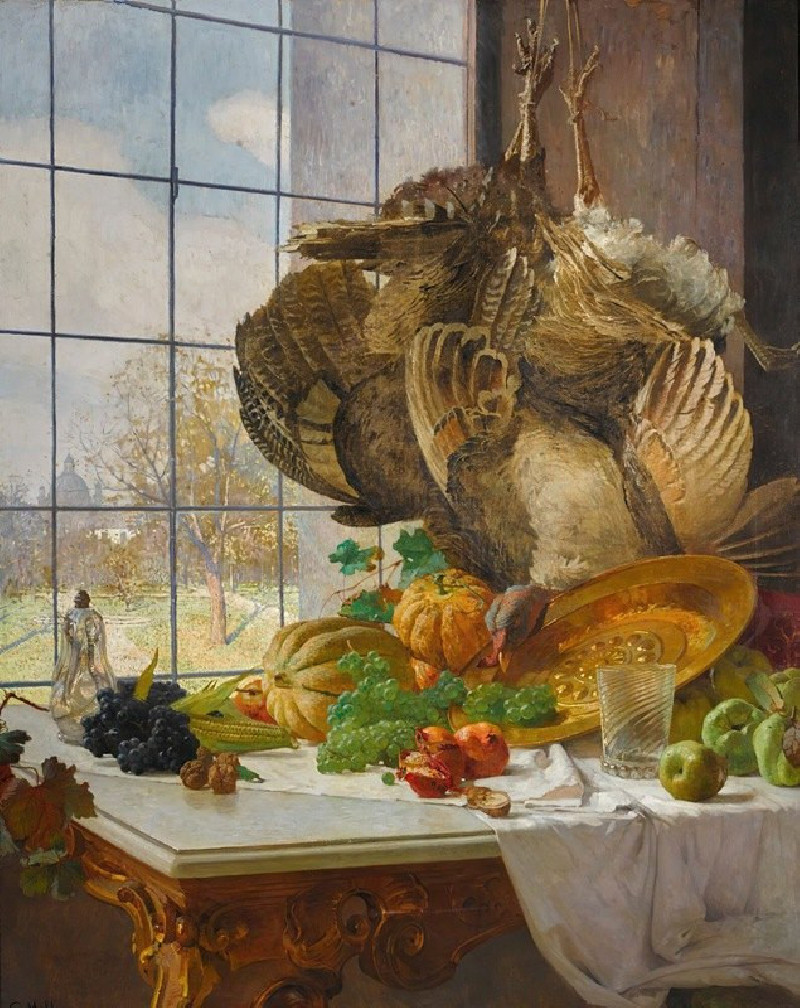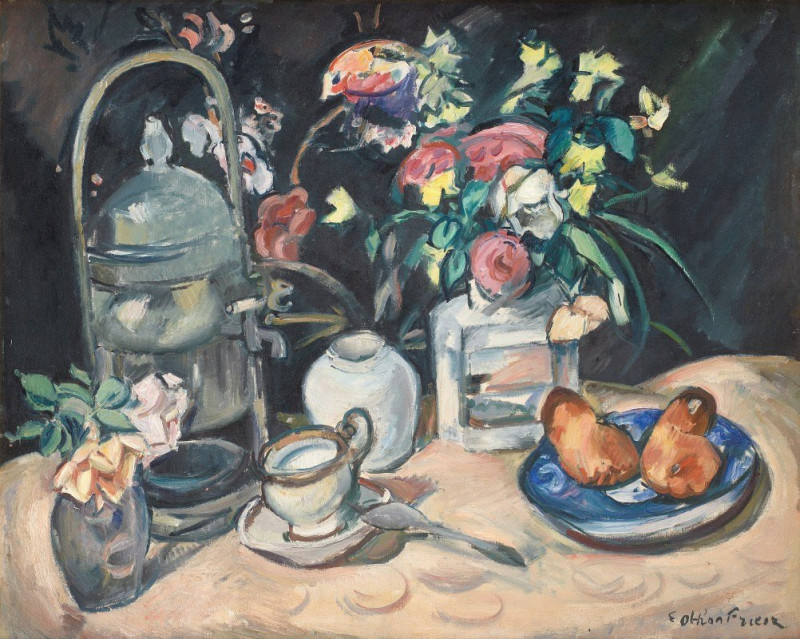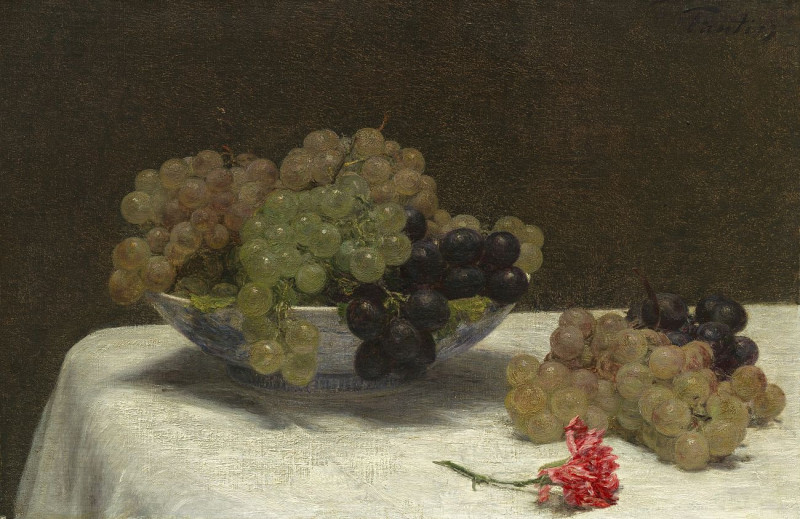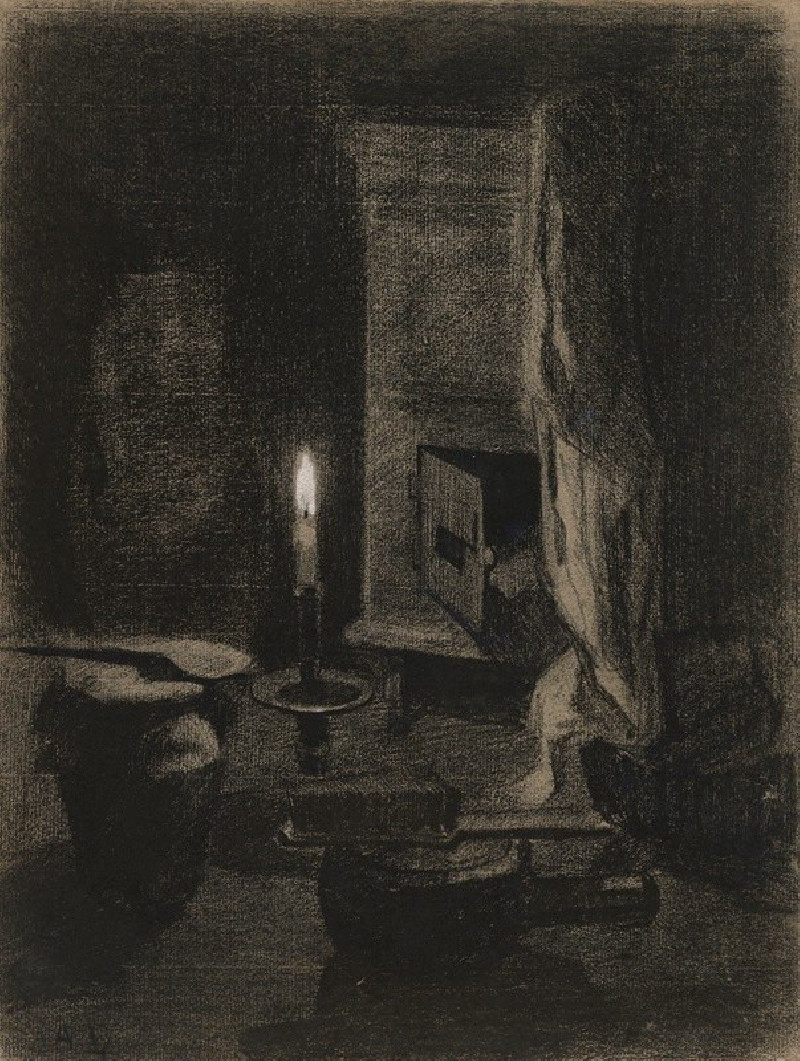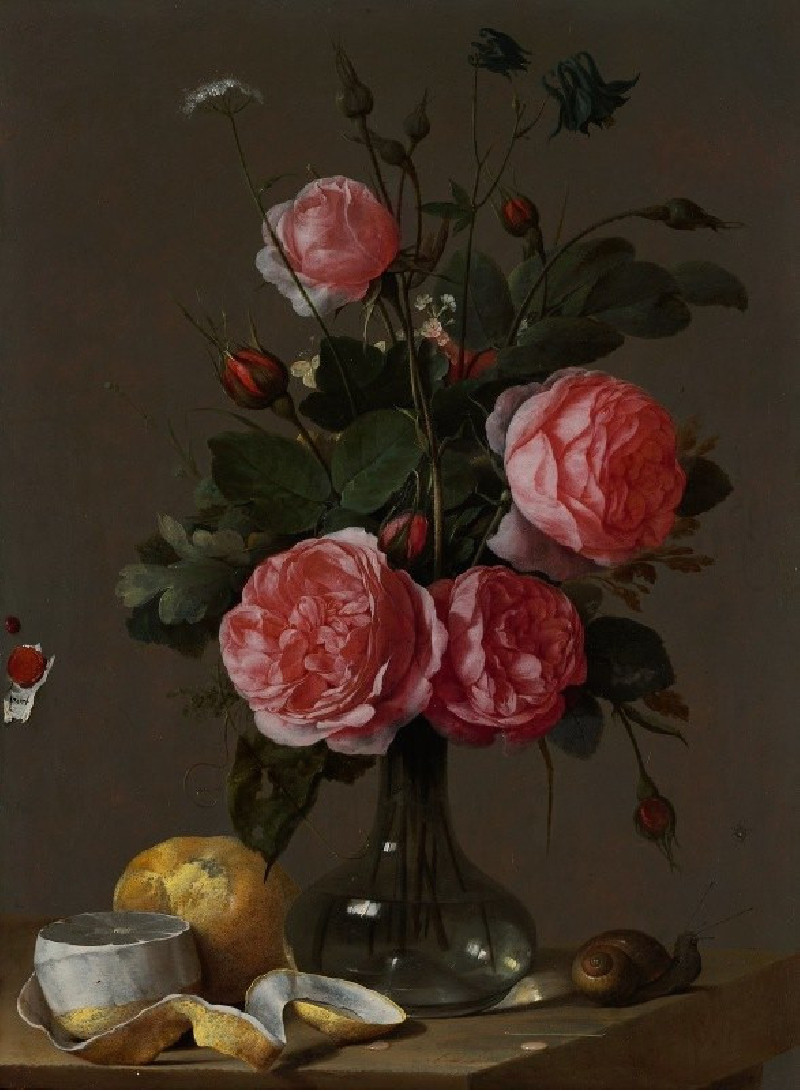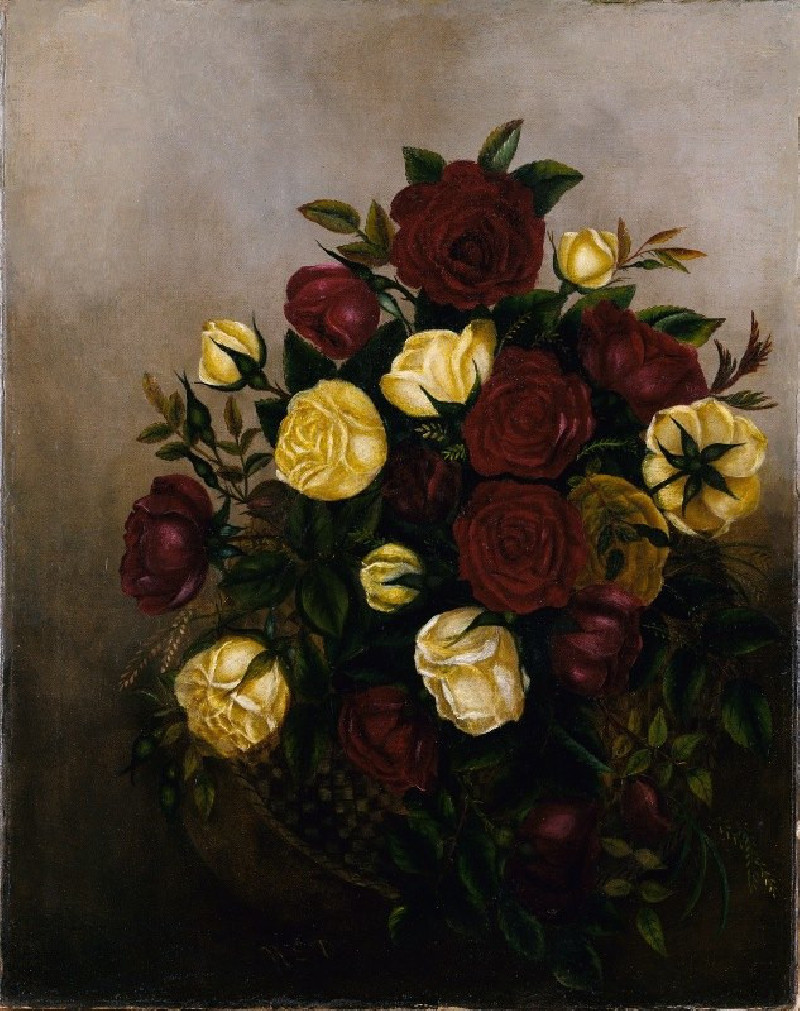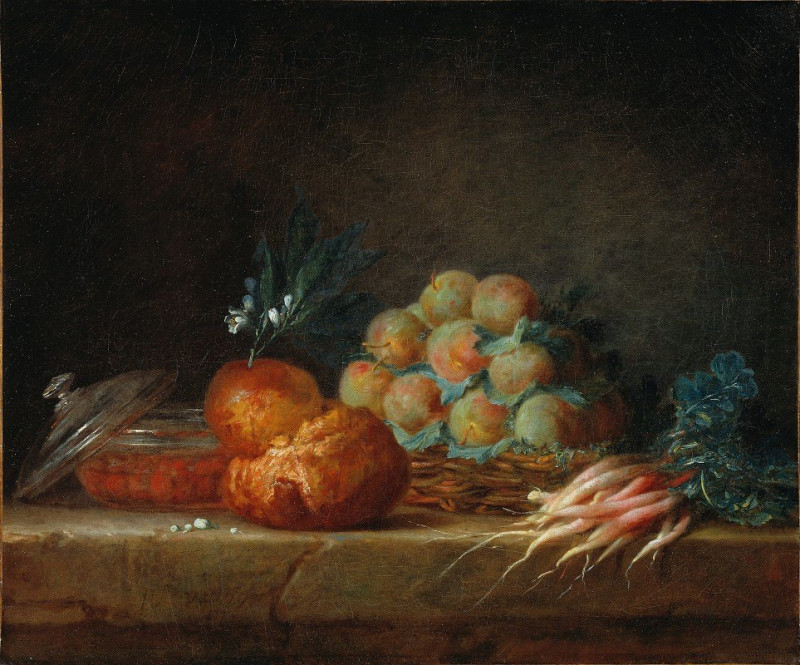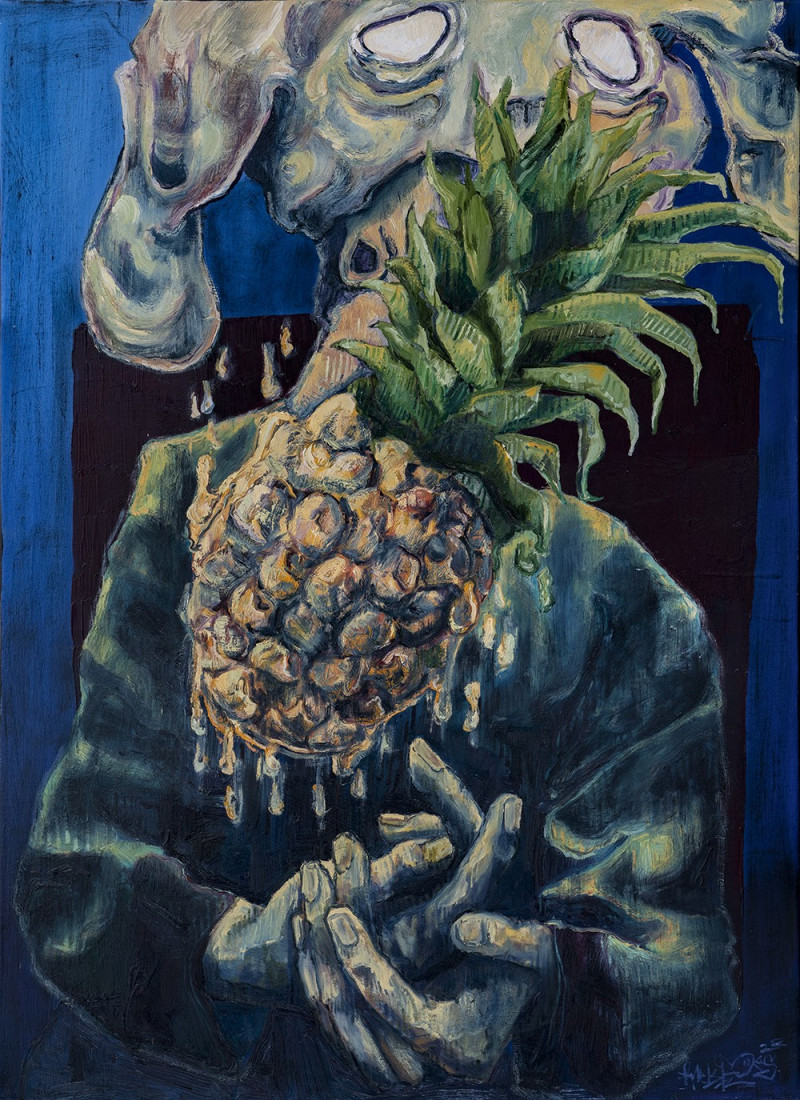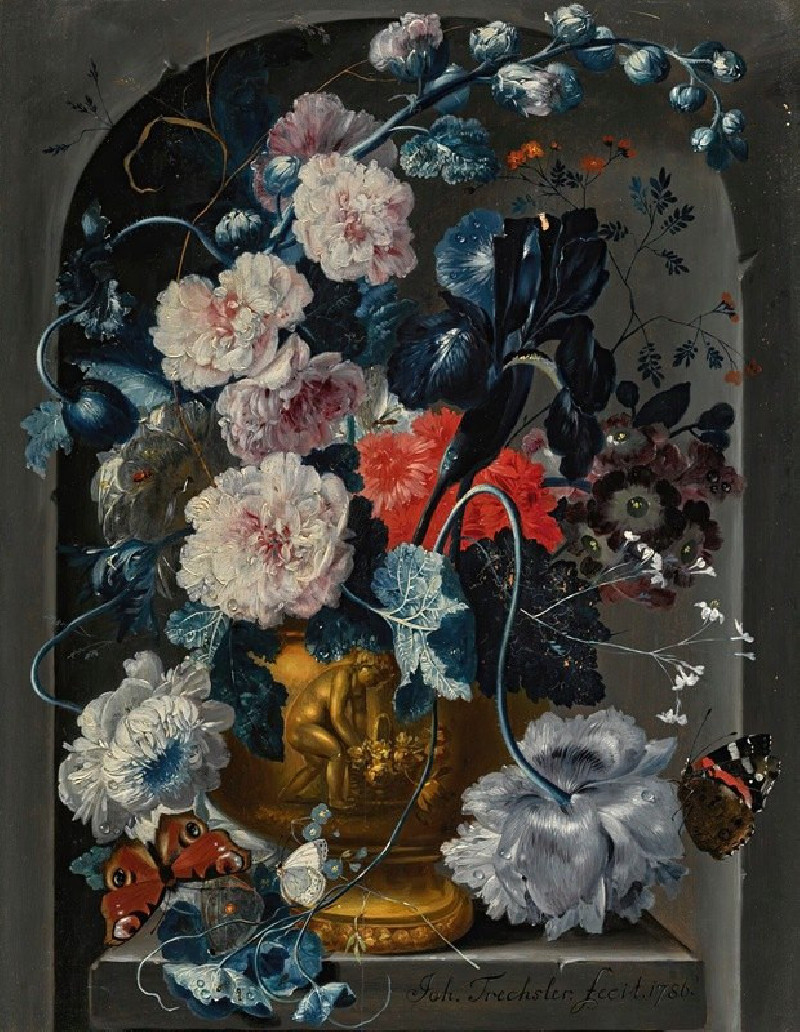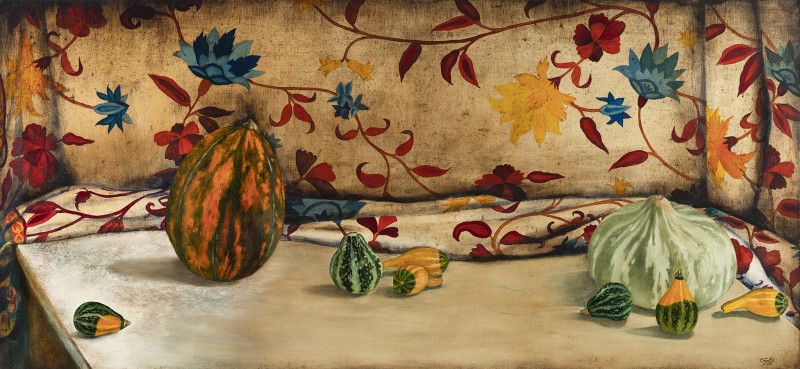Still life (1915)
Technique: Giclée quality print
Recommended by our customers
More about this artwork
Explore the vivid color palette and emotive composition in Alexej von Jawlensky's masterpiece "Still Life (1915)," a painting that captures the essence of expressionism through its dynamic and vibrant use of color. In this work, Jawlensky moves away from traditional still life depictions, using bold, abstract forms to infuse the canvas with life and movement.At the heart of the painting, a central structure that hints at a vase is filled with greenery, setting a focal point amidst a kaleidoscope of hues. Surrounding this central motif are rounded shapes in shades of deep red, bright yellow, and hints of blue, suggesting other fruits or objects typically found in a still life composition. These elements seem to pulsate with vibrancy against a backdrop swathed in a blend of yellow, blue, and lavender, which could be interpreted as both the tabletop and the ether that surrounds these objects.Jawlensky's use of sweeping curves and thick, expressive brushstrokes not only contours but also connects the elements within the painting, creating a rhythmic harmony that invites viewers to explore the interplay of color and form. Each brushstroke carries emotional weight, translating Jawlensky's inner feelings to the viewer through the language of colors."Still Life (1915)" is not just a visual experience; it is a journey into the emotional landscape of Jawlensky at a crucial period of his artistic evolution.
Delivery
Returns
Alexej Georgewitsch von Jawlensky (13 March 1864 – 15 March 1941) was a Russian expressionist painter active in Germany. He was a key member of the New Munich Artist's Association (Neue Künstlervereinigung München), Der Blaue Reiter (The Blue Rider) group and later the Die Blaue Vier (The Blue Four).

